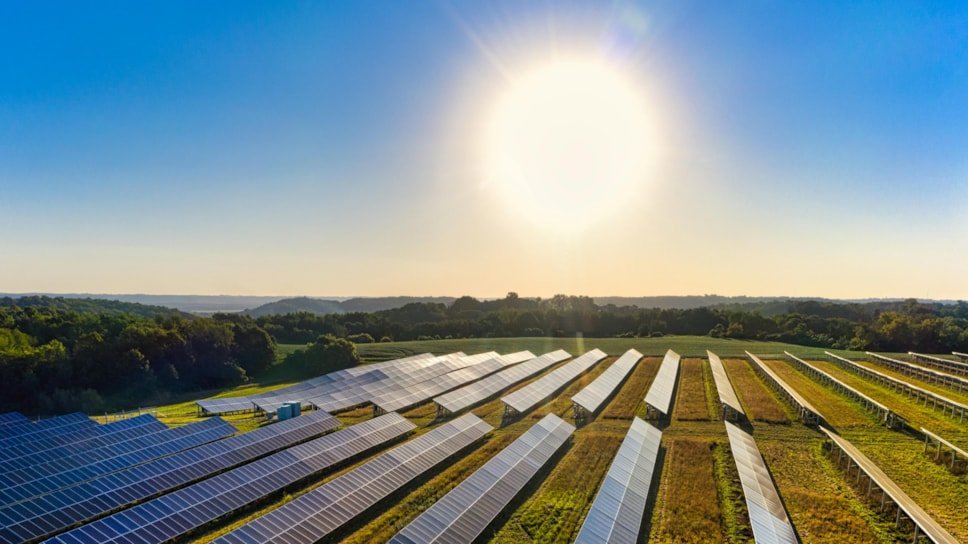
Energy Sharing Communities could share the footprint of a British solar revolution
Large-scale rooftop solar and energy sharing could complement solar farms and become a key part of the UK's net zero transition.
Whatever clichés about British weather might lead us to believe, the UK has the potential to be a solar superpower.
Government data released in June 2024 put the country’s total solar capacity at an impressive 16.9GW - an 8.5% increase on the previous year – and new installations are continuing apace.
However, there are potential obstacles casting a shadow on the horizon, and one of them is opposition to large-scale solar farms.
In recent years, some have argued that solar farms represent a threat to food security, with Dr Caroline Johnson MP arguing in a parliamentary debate earlier this year that 12 proposed solar projects in Lincolnshire would cover 9,109 hectares of farmland capable of producing 81,000 tonnes of wheat, or 57 million loaves of bread.
This may be why only 0.1% of UK land has been converted to ground-mounted solar farms, as Secretary of State for Energy Security and Net Zero Ed Miliband stated to the House of Commons in 2022.
Some argue that ground-mounted solar might not be the optimal solution for supercharging the UK’s solar capacity, and that if a viable alternative exists, green belt land could always be better used for sustainable agriculture, rewilding, or other ecologically productive purposes.
Such a viable alternative undoubtedly exists in theory. According to the Council for the Preservation of Rural England: “All suitable roof space and car parks in the UK could generate a whopping 117GW,” which is considerably more than the Government’s total solar target of 70GW by 2035, but if we are to unlock this potential alongside that of large-scale solar farms, we need to incentivise more rooftop solar in already-developed areas. That’s where Energy Sharing Communities come into play.
The ecological potential of Energy Sharing Communities
Energy Sharing Communities allow buildings such as schools, hospitals, supermarkets, and churches to help meet their energy needs by installing rooftop solar PV, and raise additional revenue by selling surplus green electricity at an affordable price to local homes and businesses.
Because they rely on pre-existing buildings that already serve local communities, they are ideally suited to developed areas such as towns and cities, and by providing energy consumers in these spaces with locally produced electricity they lessen the need for larger, centralised solar plants in rural locations.
Not only does this have the ecological benefit of keeping greenbelt land free, but it also reduces stress on the national grid by putting renewable energy generation closer to end-consumers, and could save the Government billions of pounds on infrastructure upgrades in the coming decades.
Unlike large solar farms, Energy Sharing Communities do not require any development on land that could be used for something else. Instead, they simply add value to land we’re already using by making the most of the UK’s tens of thousands of acres of vacant roof space.
They also don’t require any significant infrastructure of innovation. We can make Energy Sharing Communities a reality in the UK with a simple change of policy that would remove transmission costs from solar power that is locally generated. Given that this electricity never reaches the national grid in the first place, it makes little sense to charge network costs as if it did, and not doing so would provide the financial incentive needed for public buildings and businesses around the UK to install solar PV and start sharing energy.
Following a successful project in Spain, we are now working towards setting up an energy sharing pilot here in the UK, and are excited to work with the Government on making these communities a reality.
Whether people live in rural or urban areas, and however they want to see greenbelt land used, we believe that energy sharing is a win-win idea that can help make new energy work across the UK.
To find out more on how this big idea can solve some of the UK’s most pressing energy questions, take a look at: Energy Sharing Communities can connect renters to solar power
